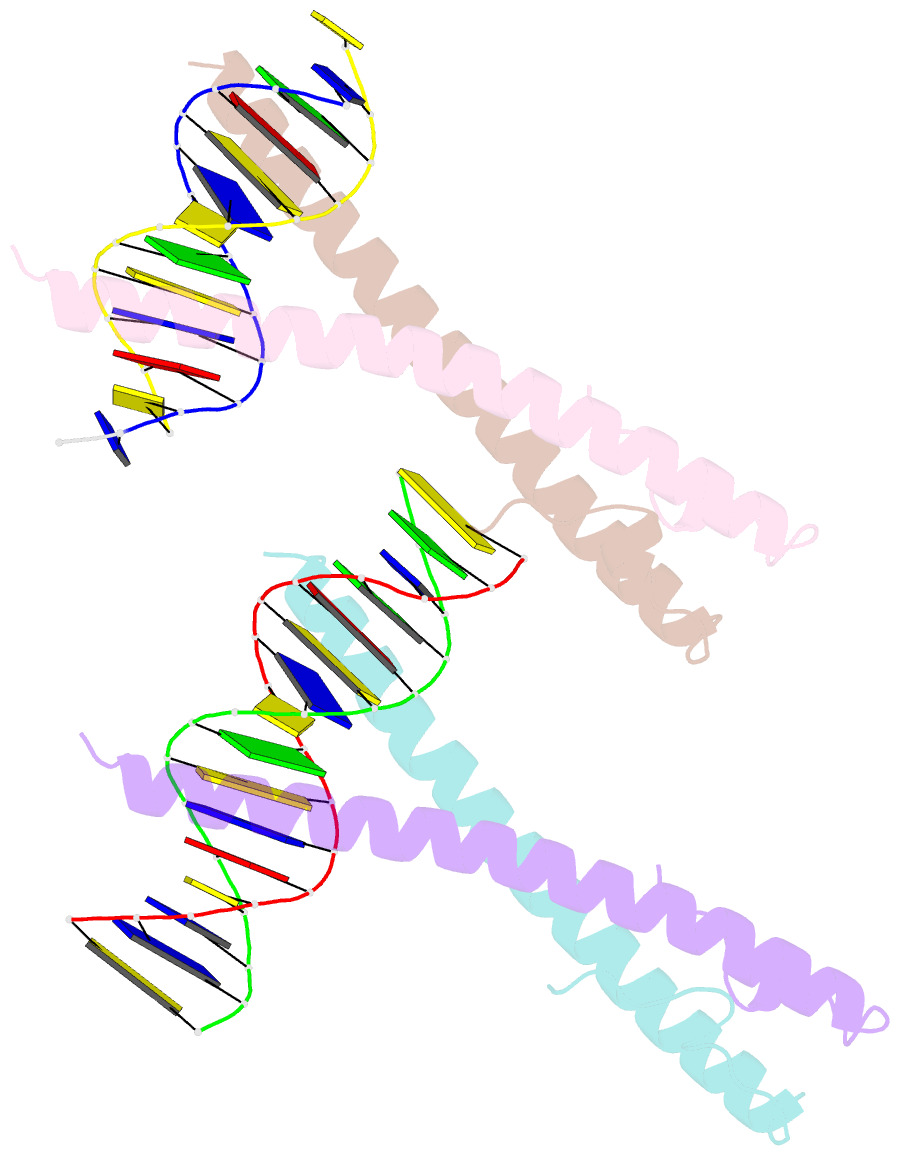Summary information and primary citation
- PDB-id
- 7nx5; SNAP-derived features in text and JSON formats;
DNAproDB
- Class
- viral protein
- Method
- X-ray (2.5 Å)
- Summary
- Crystal structure of the epstein-barr virus protein zebra (bzlf1, zta) bound to a methylated DNA duplex
- Reference
- Bernaudat F, Gustems M, Gunther J, Oliva MF, Buschle A, Gobel C, Pagniez P, Lupo J, Signor L, Muller CW, Morand P, Sattler M, Hammerschmidt W, Petosa C (2022): "Structural basis of DNA methylation-dependent site selectivity of the Epstein-Barr virus lytic switch protein ZEBRA/Zta/BZLF1." Nucleic Acids Res., 50, 490-511. doi: 10.1093/nar/gkab1183.
- Abstract
- In infected cells, Epstein-Barr virus (EBV) alternates between latency and lytic replication. The viral bZIP transcription factor ZEBRA (Zta, BZLF1) regulates this cycle by binding to two classes of ZEBRA response elements (ZREs): CpG-free motifs resembling the consensus AP-1 site recognized by cellular bZIP proteins and CpG-containing motifs that are selectively bound by ZEBRA upon cytosine methylation. We report structural and mutational analysis of ZEBRA bound to a CpG-methylated ZRE (meZRE) from a viral lytic promoter. ZEBRA recognizes the CpG methylation marks through a ZEBRA-specific serine and a methylcytosine-arginine-guanine triad resembling that found in canonical methyl-CpG binding proteins. ZEBRA preferentially binds the meZRE over the AP-1 site but mutating the ZEBRA-specific serine to alanine inverts this selectivity and abrogates viral replication. Our findings elucidate a DNA methylation-dependent switch in ZEBRA's transactivation function that enables ZEBRA to bind AP-1 sites and promote viral latency early during infection and subsequently, under appropriate conditions, to trigger EBV lytic replication by binding meZREs.





